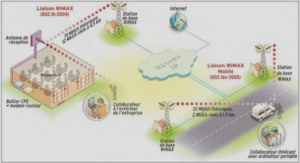Effets des changements de végétation dans les tourbières à sphaignes sur le cycle du carbone
Litter decomposition in peatlands is promoted by mixed plants
Fabien Leroy, Sébastien Gogo, Alexandre Buttler, Luca Bragazza, Fatima Laggoun-Défarge Article publié dans la revue Journal of Soils and Sediments (2017) doi: 10.1007/s11368-017-1820-3 Abstract The carbon sink function of peatlands is primarily driven by a higher production than decomposition of the litter Sphagnum mosses. The observed increase of vascular plants in peatlands could alter the decomposition rate and the carbon (C) cycle through a litter mixing effect, which is still poorly studied. Here, we examine the litter mixing effect of a peat moss (Sphagnum fallax) and two vascular plants (Pinus uncinata and Eriophorum vaginatum) in the field and laboratory-based experiment. During the laboratory incubation, mass loss, CO2 production and dissolved organic carbon concentration were periodically monitored during 51 days. The collected data were then processed in a C dynamics model. The calculated enzymatic activity was correlated to the measured β-glucosidase activity in the litter. In the field experiment, mass loss and CO2 production from litter bags were annually measured for three years. Both laboratory and field experiments clearly show that the litter mixture, i.e. SphagnumPinus-Eriophorum, had a synergistic effect on decomposition by enhancing the mass loss. Such enhanced mass loss increased the water extractable C and CO2 production in the litter mixture during the laboratory experiment. The synergistic effect was mainly controlled by the Sphagnum-Eriophorum mixture that significantly enhanced both mass loss and CO2 production. Although the β-glucosidase activity is often considered as a major driver of decomposition, mixing the litters did not cause any increase of the activity of this exo-enzyme in the laboratory experiment suggesting that other enzymes can play an important role in the observed effect. Mixing litters of graminoid and Sphagnum species led to a synergistic effect on litter decomposition. In a context of vegetation dynamics in response to environmental change, such a mixing effect could alter the C dynamics at a larger scale. Identifying the key mechanisms responsible for the synergistic effect on litter decomposition, with a specific focus on the enzymatic activities, is crucial to better predict the capacity of peatlands to act as C sinks. Keywords β-glucosidase • Carbon dynamics models • Catalysis • CO2 production • Dissolved organic carbon • Litter mixture effect Chapitre III: Interactions des végétaux vasculaires avec les sphaignes 52 III.2.1 Introduction Sphagnum-dominated peatlands accumulate organic matter (OM) as peat at a rate of ca. 20 to 30 g C m-2 year-1 (Francez 2000; Rydin et al. 2013). At global scale, peatlands are estimated to store about 270 to 547 Pg C as peat (1 Pg = 1015 g), representing ca. 15-30% of the world’s soil carbon (C) stock in an area accounting for only 3-5% of the land surface (Turunen et al. 2002; Yu et al. 2010). This high rate of C accumulation is due to peculiar environmental and soil conditions, i.e. waterlogging, anoxia, acidity, low temperature, and specific plant species composition that ultimately hamper the microbial litter decomposition so resulting in a net accumulation of OM as peat (e.g. Gorham, 1991; Holden, 2005). In particular, Sphagnum mosses have a key role for peat accumulation as they are able to create unfavorable conditions for decomposer activities by producing a recalcitrant litter and by promoting waterlogged and acidic conditions (Van Breemen 1995). As a result, Sphagnum mosses gain in competitive ability against vascular plants, whose litter is much more easily decomposable (Bragazza et al. 2007, 2009), thereby acting as effective ecosystem engineers (Van Breemen 1995). Human-induced environmental changes are expected to modify plant species abundance in peatlands, in particular by favoring vascular plants at the expense of Sphagnum mosses under a warmer climate (Buttler et al., 2015; Dieleman et al., 2015). Although previous studies have shown that warming can modify the rate of litter decomposition in peatlands (Thormann et al., 2004; Bragazza et al. 2016) and that decomposition rates of Sphagnum are lower than those of vascular plants (Hoorens et al., 2010), few studies have addressed the issue of a litter mixture effect in peatlands (Hoorens et al. 2010; Krab et al. 2013; Gogo et al. 2016). Most of the studies on litter decomposition in peatlands have focused on single plant species, although in natural conditions litters mainly consist of a mixture of multiple plant species (Salamanca et al. 1998). Litters in mixture can decompose faster (synergistic effect) or slower (antagonistic effect) than the same litter type alone (non-additive effect (Gartner and Cardon, 2004). Almost 70% of mixed-species litter exhibited non-additive mass loss with a prevalence of synergistic effects (Gartner and Cardon, 2004). Such modifications of the decomposition rate due to litter mixture could affect the imbalance between primary production and decomposition in peatlands in response to a vegetation dynamics and, ultimately, the capacity of peatlands to act as C sinks. Despite the crucial role of litter decomposition in controlling C dynamics and peat accumulation in peatlands, we have still little understanding of how the mixture litter affects decomposition. As change in leaf litter quality can affect enzyme production by soil microbes (Hu et al. 2006), litter mixture could also change enzyme activities, which may result in a non-additive effect. For example, β-glucosidase is commonly described as an important exo-enzyme involved in C-cycling, and therefore primarily in the decomposition of cellulose (Kourtev et al. 2002; Sinsabaugh et al. 2002), so that it could be a key-player in the non-additive effect of litter mixture. Nevertheless, the role of enzymes in relation to litter decomposition still needs to be elucidated. In order to understand the effect of a litter mixture of Sphagnum mosses and vascular plants on OM decomposition and C dynamics in peatlands, we performed a decomposition experiment under laboratory and field conditions. Experimental laboratory data were then used to calibrate a C dynamics model proposed by Gogo et al. (2014), using three C compartments: the solid (mass loss), the dissolved (Water Extractable Organic Carbon, WEOC) and the gaseous components (CO2-C). In this model, the litter is catalyzed by exo-enzymes at a rate “c” to produce soluble organic C, i.e. WEOC, which is used for respiration at a rate “r” by microorganisms. The model gives a catalysis rate for each litter that contributes to overall catalytic activity. The field experiment was performed to assess whether there was agreement between laboratory and field decomposition tests by focusing on mass loss and CO2 production. Overall, the aims of this work were: (i) to determine the occurrence of a litter mixture effect for three different plant species during decomposition; (ii) to elucidate the role of β-glucosidase activity during litter decomposition; (iii) to relate the catalysis rate from the C dynamics modeling to the activity of hydrolytic enzymes.
Materials and methods Study site and litter sampling
Plant litter material for laboratory and field experiments was collected at the Forbonnet peatland in Frasne (France, N46°49’35” E 6°10’20”, 840m). The site is a Sphagnum-dominated peatland with a mean annual temperature of 7.5°C and annual rainfall amount of 1400 mm (Laggoun-Défarge et al. 2008; Delarue et al. 2011). The vascular plant cover mainly consists of Eriophorum vaginatum, Scheuchzeria palustris, Andromeda polifolia, Vaccinium oxycoccos and Carex limosa (Buttler et al. 2015) with a recent increased abundance of trees of the genus Pinus in response to a decline in peat water content, as observed in many bogs in the study region (Frelechoux et al. 2000). Overall, the moss layer is primarily dominated by Sphagnum fallax and S. magellanicum. Litter samples of Eriophorum vaginatum (E) and Pinus uncinata Chapitre III: Interactions des végétaux vasculaires avec les sphaignes 54 (P) were composed, respectively, of senescent leaves and needles. Litter samples of Sphagnum fallax (S) corresponded to the decaying part just below the green photosynthesizing apical part (Bragazza et al. 2007). After having been air-dried, sub-samples of each litter type were oven dried at 50°C for 48 hours in order to calculate the dry weight. Laboratory experiment Sample preparation and incubation – For the laboratory experiment, samples of one gram for seven litter types were prepared. Litter types were formed by single litter of Sphagnum fallax (S), Eriophorum vaginatum (E) or Pinus uncinata (P), and by the following mixtures: Sphagnum fallax + Eriophorum vaginatum (SE), Sphagnum fallax + Pinus uncinata (SP), Pinus uncinata + Eriophorum vaginatum (PE) and Sphagnum fallax + Pinus uncinata + Eriophorum vaginatum (SPE). Litter samples received 20 mL of peatland water overnight in order to inoculate microorganisms (Hoorens et al. 2002). The excess water was removed with a tissue and the litter samples were placed in aluminum cups with small holes at the bottom to allow air circulation. The cups were placed on a 0.4 L pot containing 20 mL of saturated solution of K2SO4 to maintain moist conditions. Each pot with its cup was covered with perforated aluminum foil to allow air circulation. All pots were placed in an incubator (Aralab 1200) at 20°C and 95% of relative humidity. A total of 105 litter samples (pots) were prepared in order to have 3 replicates for each of the 7 litter types and 5 periodical harvests. At intervals of 0, 1, 14, 28 and 51 days after incubation, we measured CO2 production, water extractable organic carbon (WEOC) release, litter mass loss, β-glucosidase activities and C content in 3 replicats of each litter type.
I. Contexte scientifique et objectifs de la thèse |




